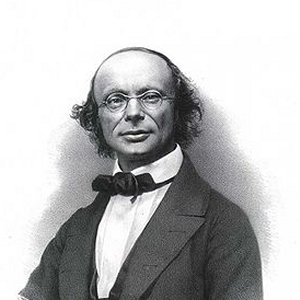- Wilhelm Eduard Weber
Infobox_Scientist
name = Wilhelm Weber

caption = Wilhelm Eduard Weber (1804-1891)
birth_date = birth date|1804|10|24|mf=y
birth_place =Wittenberg ,Germany
death_date = death date and age|1891|6|23|1804|10|24|mf=y
death_place =Göttingen ,Germany
nationality = flag|German Empire
field =Physicist
work_institution =University of Göttingen
alma_mater =University of Halle
doctoral_advisor =Johann Salomo Christoph Schweigger
doctoral_students=Ernst Abbe
Friedrich Kohlrausch
known_for = Work onmagnetism
prizes =
religion =
footnotes = He is the brother ofErnst Heinrich Weber and Eduard Weber.Wilhelm Eduard Weber (
October 24 ,1804 –June 23 ,1891 ) was a Germanphysicist .He was born in
Wittenberg , where his father, Michael Weber, was professor of theology. William was the second of three brothers, all of whom were distinguished by an aptitude for the study of science. After the dissolution of the University ofWittenberg his father was transferred to Halle in 1815. William had received his first lessons from his father, but was now sent to the Orphan Asylum and Grammar School at Halle. After that he entered the University, and devoted himself to natural philosophy. He distinguished himself so much in his classes, and by original work, that after taking his degree of Doctor and becoming a "Privatdozent " he was appointed Professor Extraordinary of natural philosophy at Halle.In 1831, on the recommendation of
Carl Friedrich Gauss , he was called toGöttingen as professor of physics, although but twenty-seven years of age. Hislectures were interesting, instructive, and suggestive. Weber thought that, in order to thoroughly understand physics and apply it to daily life, mere lectures, though illustrated by experiments, were insufficient, and he encouraged his students to experiment themselves, free of charge, in the college laboratory. As a student of twenty years he, with his brother,Ernst Heinrich Weber , Professor of Anatomy atLeipzig , had written a book on the "Wave Theory and Fluidity," which brought its authors a considerable reputation. Acoustics was a favourite science of his, and he published numerous papers upon it in "Poggendorffs Annalen," Schweigger's "Jahrbücher für Chemie und Physik," and the musical journal "Carcilia." The 'mechanism of walking in mankind' was another study, undertaken in conjunction with his younger brother, Eduard Weber. These important investigations were published between the years 1825 and 1838. Gauss and Weber constructed the first electromagnetictelegraph in 1833, which connected the observatory with the institute for physics inGöttingen .Displaced by the Hanoverian Government for his liberal opinions in politics, Weber travelled for a time, visiting England, among other countries, and became professor of physics in Leipzig from 1843 to 1849, when he was reinstalled at Göttingen. One of his most important works was the "Atlas des Erdmagnetismus" ("atlas of geomagnetism"), a series of magnetic maps, and it was chiefly through his efforts that magnetic observatories were instituted. He studied magnetism with Gauss, and in 1864 published his "Electrodynamic Proportional Measures" containing a system of absolute measurements for electric currents, which forms the basis of those in use. Weber died in
Göttingen , where he is buried in the same cemetery asMax Planck andMax Born .The
SI unit ofmagnetic flux , the weber (symbol: Wb) is named after him.References
*
* - obituary
* - Telegraph of Weber and Gauss (with pictures)
*External links
* [http://vlp.mpiwg-berlin.mpg.de/people/data?id=per155 Biography and bibliography] in the
Virtual Laboratory of theMax Planck Institute for the History of Science Persondata
NAME= Weber, Wilhelm
ALTERNATIVE NAMES=
SHORT DESCRIPTION=Physicist
DATE OF BIRTH=October 24 ,1804
PLACE OF BIRTH=Wittenberg ,Germany
DATE OF DEATH=June 23 ,1891
PLACE OF DEATH=Göttingen ,Germany
Wikimedia Foundation. 2010.
